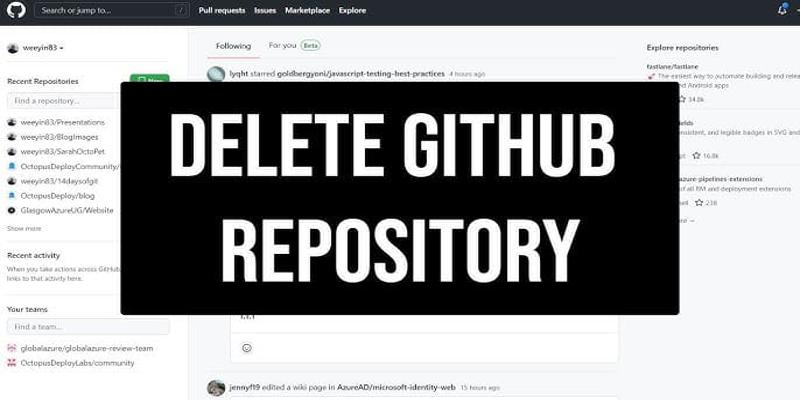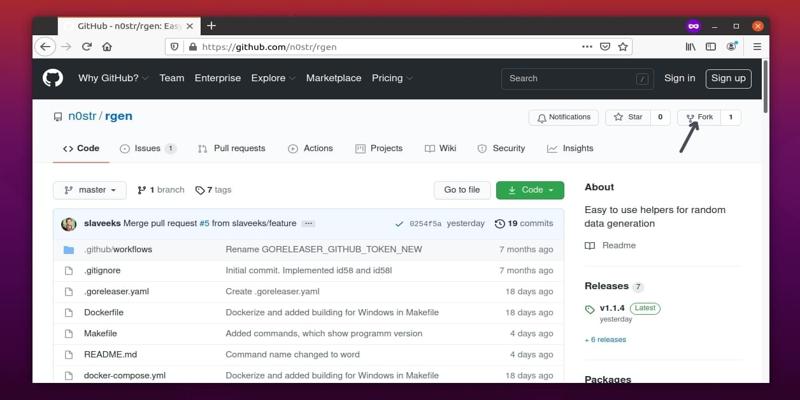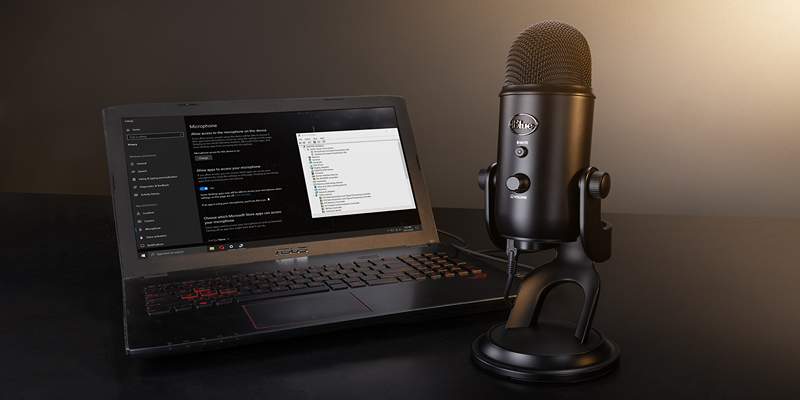Deleting a Repository on GitHub: Instructions
The straightforward physics of repository deletion in GitHub remains necessary because the process leads to permanent removal. This tutorial explains the complete process of deleting a repository when considering deletion benefits and demonstrates repository management fundamentals.
Introduction to GitHub Repositories

GitHub provides developers with an effective platform to do version control and team collaboration while they manage their projects. The key functionality of GitHub resides in repositories because they function as locations that collect and manage project-related content which includes documentation and code files. The deletion of repositories becomes necessary when projects advance beyond use or when projects become outdated for the purpose of workspace organization.
Steps to Delete a GitHub Repository
A repository can be deleted only through possession of organization ownership or admin rights for the repository.
Here’s how to proceed:
- Launch Into Your GitHub Environment Through Your Credentials: Begin the process by using your account credentials.
- You must access the repository first and then open the one that needs deletion.
- The Repository Settings page is available through clicking your repository name followed by selecting the Settings tab. The settings option will not show immediately so access it through the drop-down menu.
- Browse to General settings page and reach the Danger Zone section at the bottom of the page.
- To start the deletion process click Delete this repository.
- You must verify the repository removal through a text entry that requests you to type the name of the affected repository. You need to verify the repository name before you can execute the deletion prompt.
- You must click Delete this repository after confirmation to implement the deletion process.
Implications of Deleting a Repository
When deleting a repository several events unfold that should be taken into account.
- The deletion of a repository becomes permanent unless GitHub provides a restoration option to certain types of accounts for a limited period of ninety days.
- All files together with issues comments and team permissions associated with the repository will be deleted permanently.
- An open repository which is public will maintain its status regardless of the deletion action because forks remain unaffected. A deleted private repository causes the removal of all forks from its database.
- Platform collaboration will disband every existing association between collaborators.
Managing Repositories Effectively

Professional GitHub administrators can apply these methods to keep their workspace organized efficiently:
Your repositories require periodic analysis to determine which ones should be archived.
Archiving allows users to preserve repositories which maintain important data while being in an inactive state.
Your documentation needs to include both modified files and permanent deletions so that everyone can see what happened to repository content.
Comparison of Repository Management Options
Option | Description | Implications |
|---|---|---|
Delete | Permanently removes a repository. | Irreversible, except in limited cases. All data and forks (for private repos) are deleted. |
Archive | Marks a repository as read-only, indicating it is no longer actively maintained. | Preserves data and history. Does not delete forks. |
Transfer | Moves ownership of a repository to another user or organization. | Maintains all data and history. Useful for handing over projects. |
Best Practices for Repository Deletion
A backup of valuable data should exist prior to removal for future potential retrieval purposes.
Tell all your collaboration members about the upcoming deletion to prevent work-related confusion.
Double-check your permissions status before proceeding with repository deletion.
Alternatives to Deletion
Perform this check before making any decisions to erase your repository.
The archiving process transforms a repository into a read-only state, maintaining its historical records to indicate it has been deactivated. This approach makes research projects better reference materials after their completion.
When a team hands ownership of a project to other personnel then transferring ownership becomes more suitable than complete deletion.
Common Scenarios for Repository Deletion
Projects considered obsolete must remain in the read-only state because newer versions have replaced them.
Test Repositories serve as short-term temporary locations made for testing functions.
Merged Projects refer to those repositories which developers have incorporated into different repositories.
Tools for Managing GitHub Repositories
Several applications exist to improve the efficiency of managing GitHub repositories.
GitHub CLI creates a command-line interface that enables you to handle repositories through automation optimization.
With GitHub Desktop, users receive a desktop-based interface to handle repositories on their local computer systems.
The storage management software GitKraken and Tower provide extra features that enhance the repository experience.
Note
An organization needs to carefully assess before performing final deletion of their GitHub repositories because the action produces permanent results. You need absolute control over the repository through admin privileges or ownership before proceeding with deletion because the process completely removes every piece of repository content including all files together with issues and collaboration records. You need to access the repository Settings section followed by Danger Zone, where you complete the repository deletion process through typed repository name entry. Most accounts lack any means to undo this permanent step therefore, you must create backups of essential data prior to this action.
Archiving a repository stands as the preferred method to save valuable content when you don't plan to update it. Archiving converts repositories into read-only structures that save every piece of historical information and all forked versions. The repository archiving option works well for finished deliverables, which remain helpful references. Transferring ownership provides an alternative method to grant repository control to other users or organizations without changing their data content. Such management alternatives avoid losing crucial information while preserving organization.
Delete a repository only after consulting your collaborators because it could interrupt their work. The repository must be verified for non-use before deletion because restoration through backups only runs for 90 days for specific account types. Public repository forks are unaffected, but private repository forks get deleted in such cases. The correct documentation of deletion activities enables transparent operations, which notifies team members regarding project modifications.
The effective management of repositories depends on scheduled reviews to find unnecessary or extra projects. GitHub CLI together with GitHub Desktop provides users with automated repository controls as well as simplified repository management solutions. Users can maintain an efficient and organized GitHub workspace that reduces data loss risks through best practices which include both data backup measures as well as alternative exploration and clear communication channels.
Conclusion
A user can easily delete their repository in GitHub although the process becomes essential because the action makes all data irretrievable. Understanding the effects and implementing best practices allows users to effectively organize and keep their current projects linked to their GitHub workspace.
On this page
Introduction to GitHub Repositories Steps to Delete a GitHub Repository Implications of Deleting a Repository Managing Repositories Effectively Comparison of Repository Management Options Best Practices for Repository Deletion Alternatives to Deletion Common Scenarios for Repository Deletion Tools for Managing GitHub Repositories Note ConclusionRelated Articles

What is a squeeze page?

Conducting Market Research Surveys: DIY Tips and Techniques

Fixing Unstable Device Connections: Why Your Device Keeps Disconnecting

The 8 Best Note-Taking Apps for iPad: Stay Organized and Boost Productivity

Usersnap vs. Userback vs. Marker.io: A Comprehensive Comparison

Best Calendar Apps for Windows to Boost Productivity: Stay Organized in 2025

GitHub vs GitLab vs BitBucket: A Comprehensive Breakdown

Effortless Steps to Convert and Upscale Video to 4K Resolution

Microphone Not Working in Online Learning Platforms? Try These Fixes

Best Project Management Software for Small Businesses: A Comprehensive Guide

Exploring Passkeys: How They Work and Their Advantages

 suptoolbox
suptoolbox